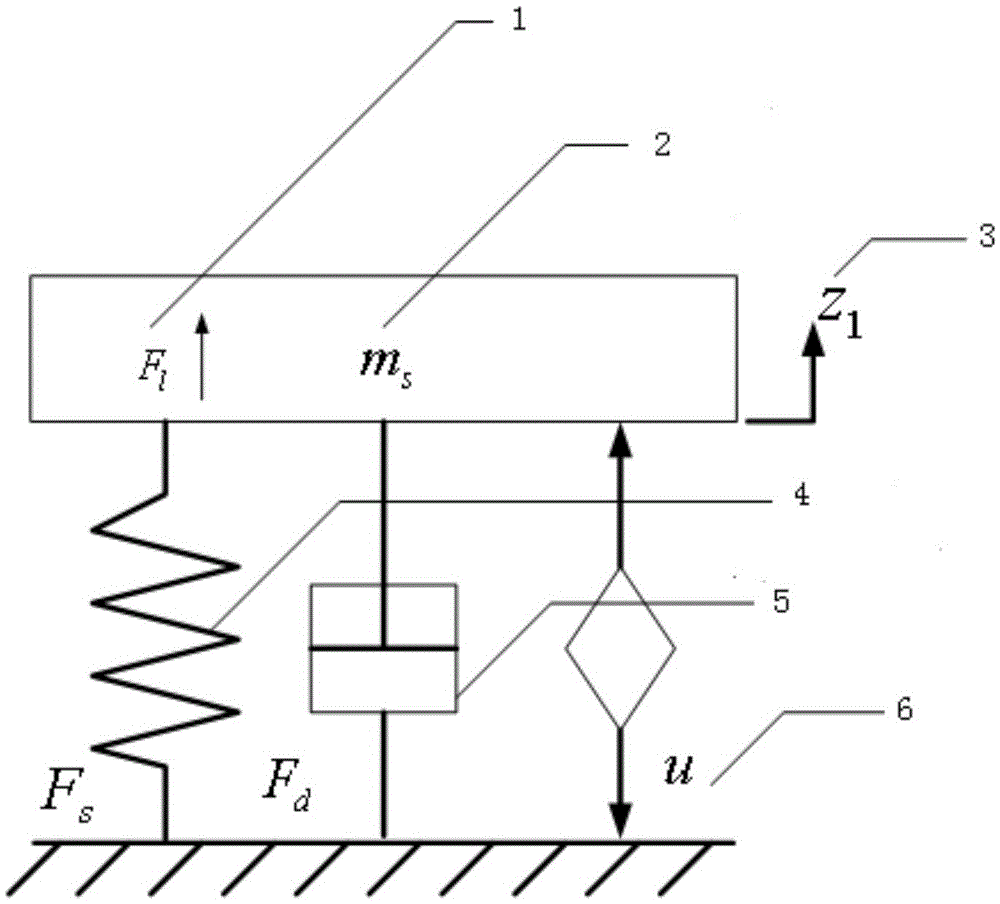An actuator input saturation control method for an automobile active suspension system
A technology of active suspension and control method, applied in suspension, elastic suspension, transportation and packaging, etc., can solve the problems of inability to meet the control performance of the suspension system and the influence of the control performance of the system, so as to improve the driving comfort. degree, to meet the control performance, to improve the effect of comfort
- Summary
- Abstract
- Description
- Claims
- Application Information
AI Technical Summary
Problems solved by technology
Method used
Image
Examples
specific Embodiment approach 1
[0023] Specific embodiment 1: The actuator input saturation control method of an automotive active suspension system of this embodiment is specifically prepared according to the following steps:
[0024] Step 1. Establish a nonlinear uncertain time-delay active suspension system model;
[0025] Step 2, deriving an adaptive backstep recursive controller based on the instruction filter;
[0026] Step 3: Adjusting the control gain parameters of the adaptive backstep recursive controller, namely, completing an actuator input saturation control method for an automotive active suspension system, such as: figure 1 shown.
[0027] Effects of this implementation:
[0028] This embodiment proposes an actuator input saturation control method for an active suspension system. Considering the uncertainty of actuator parameters in the actual vehicle and the vertical dynamic response of the vehicle body, an adaptive backstep recursion based on command filter is proposed. The control method...
specific Embodiment approach 2
[0030] Embodiment 2: The difference between this embodiment and Embodiment 1 is that: Step 1 establishes a nonlinear uncertain time-delay active suspension system model as follows:
[0031] According to Newton's second law, the dynamic equation of the active suspension system can be expressed as:
[0032] m s z · · 1 + F d ( z · 1 , t ) + F s ( z 1 , t ) = u ( t ) + F l ( t ) ...
specific Embodiment approach 3
[0047] Embodiment 3: The difference between this embodiment and Embodiment 1 or 2 is that: the specific parameters of formulas (1) to (7) for establishing a nonlinear uncertain time-delay active suspension system model are as follows: sprung mass: m s =100kg; linear stiffness coefficient of spring assembly: k s1 =1500N / m; nonlinear stiffness coefficient of spring assembly: Damping coefficient of spring assembly damper: c m =1095Ns / m; the maximum output force of the actuator is u max =500N. Other steps and parameters are the same as in the first or second embodiment.
PUM
 Login to View More
Login to View More Abstract
Description
Claims
Application Information
 Login to View More
Login to View More - R&D
- Intellectual Property
- Life Sciences
- Materials
- Tech Scout
- Unparalleled Data Quality
- Higher Quality Content
- 60% Fewer Hallucinations
Browse by: Latest US Patents, China's latest patents, Technical Efficacy Thesaurus, Application Domain, Technology Topic, Popular Technical Reports.
© 2025 PatSnap. All rights reserved.Legal|Privacy policy|Modern Slavery Act Transparency Statement|Sitemap|About US| Contact US: help@patsnap.com



